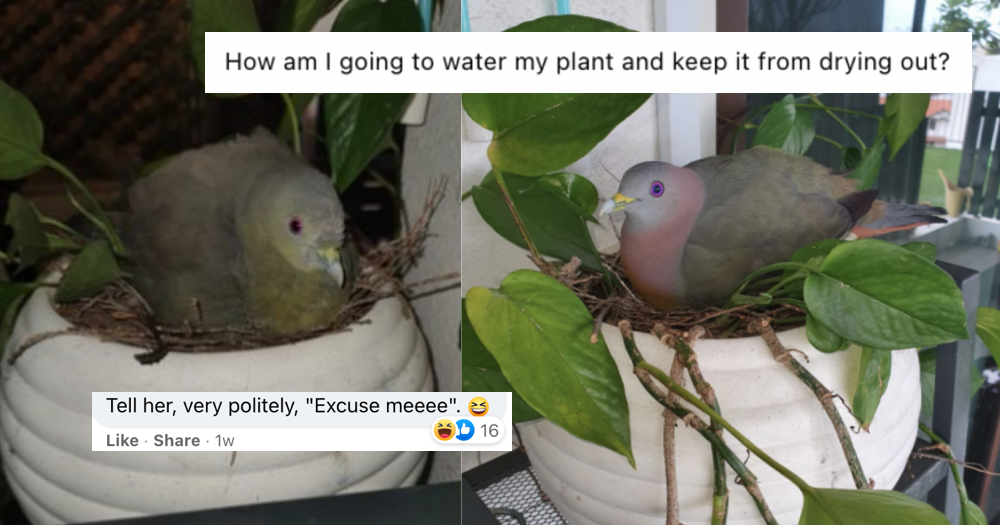Follow us on Telegram for the latest updates: https://t.me/mothershipsg
A pink-necked green pigeon has found itself a home in the most unlikely of places: atop a Singaporean man's potted plant.
To water or not?
That led to an interesting dilemma for the homeowner, surnamed Wong, who took to the Singapore Wildlife Sightings Facebook group to seek advice on June 9.
"How am I going to water my plant and keep it from drying out?" he asked in the group.
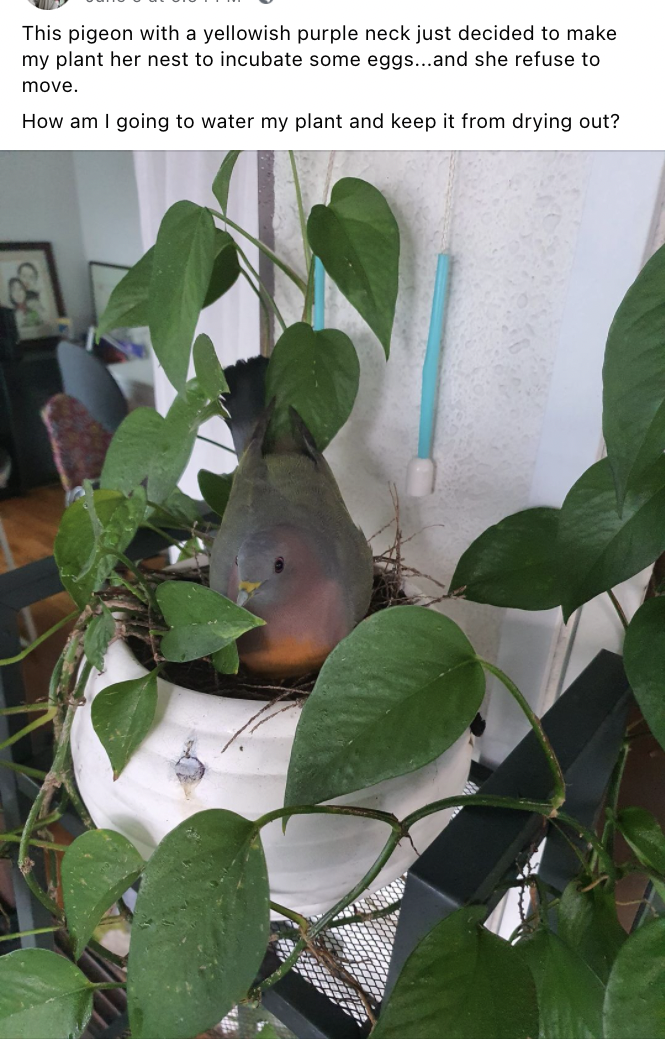 Screenshot image from Singapore Wildlife Sightings/FB.
Screenshot image from Singapore Wildlife Sightings/FB.
The pigeon, which Wong reported to have a "yellowish purple neck", decidedly made his potted plant its home. That made it difficult for a seemingly perplexed Wong to water his plant.
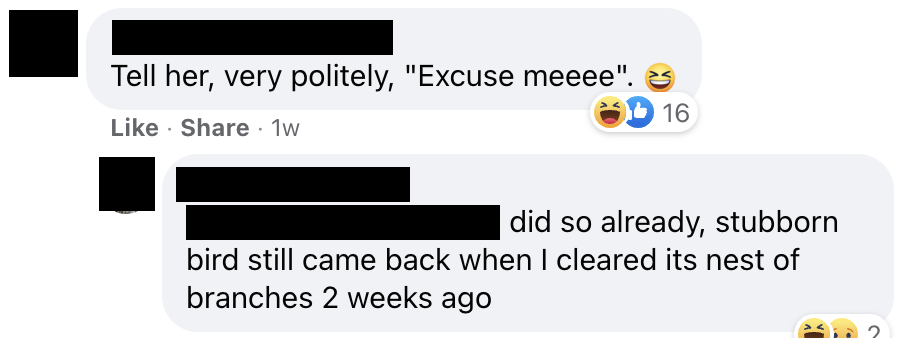 Screenshot via Singapore Wildlife Sightings/Facebook
Screenshot via Singapore Wildlife Sightings/Facebook
Some keen eyed netizens were quick to identify that the colourful plumage shows that it is a male pink-necked green pigeon not a female.
How to water the plant without disturbing the pigeons?
Wong's post sparked discussion in the nature-loving group that became rather invested in the conundrum.
The group doled out work around solutions that would not jeopardise both cohabiting lifeforms.
Wong said the comment section that he had tried to water his plant from the side but the pigeon did not appreciate it.
As a very considerate host, Wong stopped watering his plant to avoid ruffling any feathers.
After what seemed like some trial and error, Wong finally found a way to water his plant by placing a water-filled bucket beneath the pot so both his plant and the roosting pigeons could "co-exist".
Here you see a photo of the female pigeon sitting on the eggs during night time:
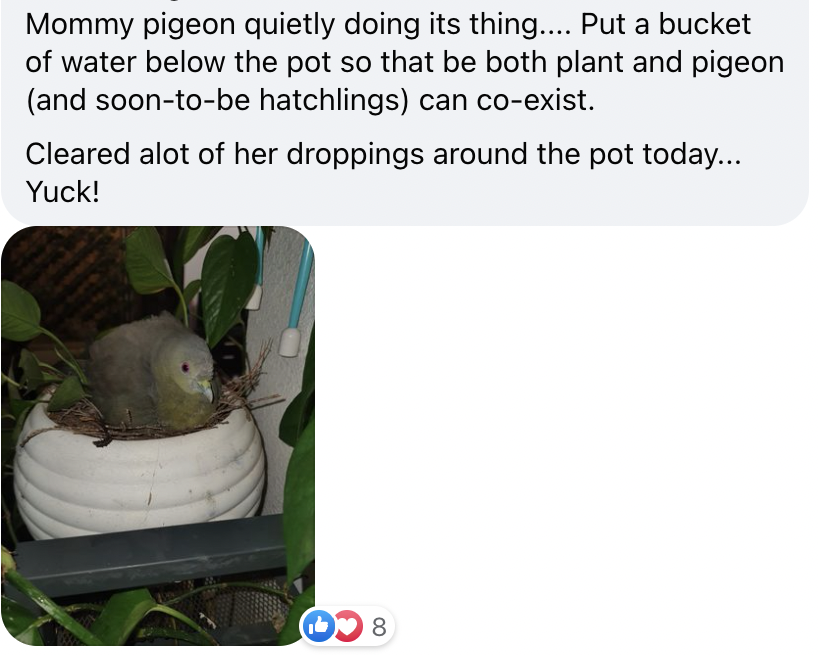 Screenshot image from Singapore Wildlife Sightings/FB.
Screenshot image from Singapore Wildlife Sightings/FB.
Wong even helped to clear the pigeon droppings. Five-star great service by the host.
Pigeon appears 'happy' while plant is 'surviving well'
Ten days later, Wong followed up with an update on his feathery tenants on June 19.
He said he only noticed one egg was laid which, after doing some reading of his own, would take two more weeks before it hatches.
With a photo of the male pigeon, Wong wrote that it appeared "happy" taking refuge in the pot which shelters the pigeon family from rain and sun.
Meanwhile, the plant was "surviving well" even though Wong said he is unable to water the plant any longer.
He also gave a stern warning to the feathery tenant after clearing "lots of bird poo" left behind by the couple.
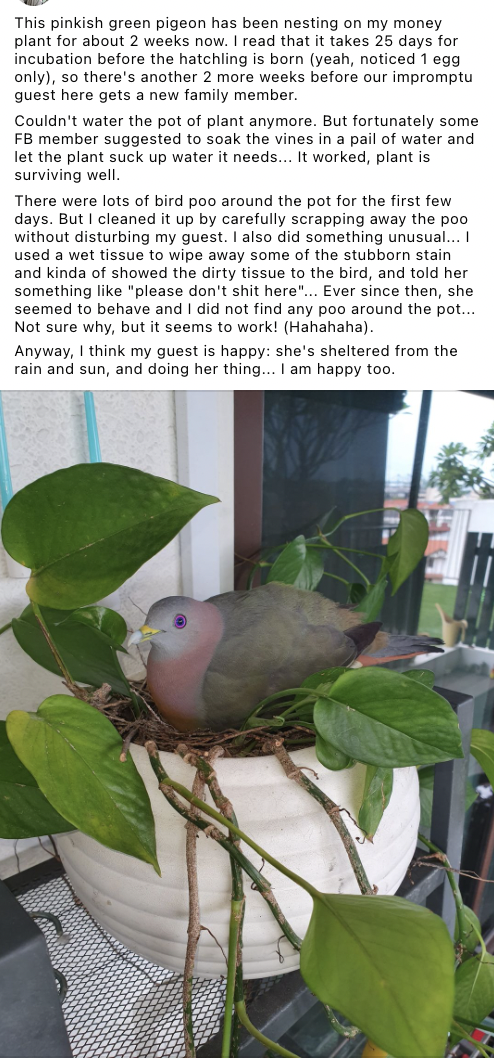 Screenshot image from Singapore Wildlife Sightings/FB.
Screenshot image from Singapore Wildlife Sightings/FB.
Pink-necked green pigeons
A common species in Singapore, pink-necked green pigeons are visually unlike their run-of-the-mill common pigeon counterparts.
Both male and female pigeons have green bodies and yellow wing bars. But this is where the similarities end.
Pink-necked green pigeons are sexually dimorphic, a condition where the two sexes from a same species differ in more than one manner besides their sexual anatomy.
In the case of pink-necked green pigeons, their plumage are vastly different. A male is vibrantly coloured with blue, purple, orange and shades of green while a female is a slightly more subdued green throughout.
Their name in latin – Treron Vernans – means green pigeon, and brilliant and flourishing respectively.
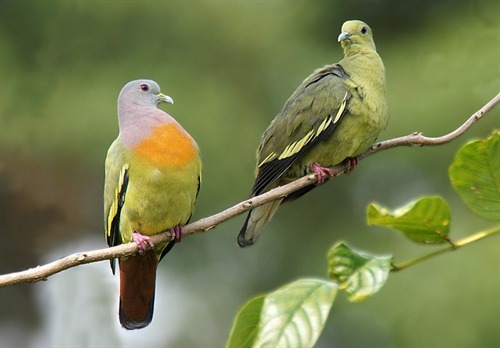 Male on the left and female on the right. Image from National Parks Board website.
Male on the left and female on the right. Image from National Parks Board website.
Mate for life
Pink-necked green pigeons are monogamous, and that means the birds commit to a mate for life.
Their breeding season takes place between March and July when a clutch of two white eggs are typically laid.
All hands on deck are required from both parents in the process of nest building, egg incubation, brooding and chick feeding.
If you noticed, Wong saw the male pigeon during day time while the photo of the female pigeon was taken at night.
The pigeon parents take turn to sit on the eggs; male pigeons incubate during the day while females do so at night for a period lasting 17 days.
The hatchlings are called squabs and are fed pigeon milk, or crop milk, first.
Produced by both parents, the milk consists of fluid-filled cells shed from the lining of the crop, a food storage gland located at the bottom of the birds' oesophagus.
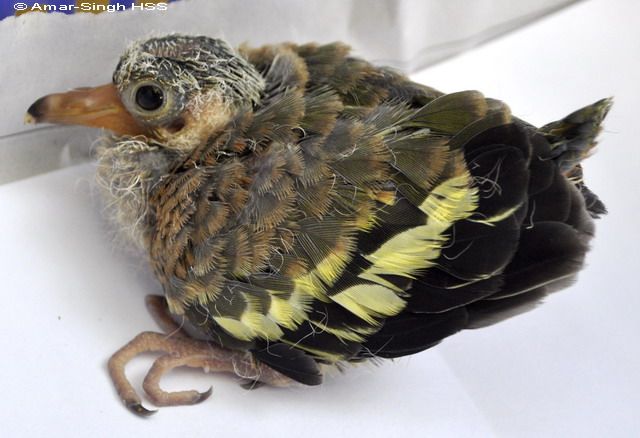 A squab. Image by Amar-Singh HSS from Oriental Bird Images website.
A squab. Image by Amar-Singh HSS from Oriental Bird Images website.
Here's a video taken at Springleaf Drive showing how a pink-necked green pigeon provides the younglings with crop milk:
Related stories:
Top image from Daniel Wong/FB.
If you like what you read, follow us on Facebook, Instagram, Twitter and Telegram to get the latest updates.
